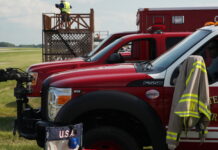Black Jack is a game of risk. If there was an extra ace in the Black Jack decks at the Paris Las Vegas Hotel, would anyone be in the exhibit hall during the ICAS Convention? Small changes in risks have big rewards. The air show business needs simple tools that performers and producers can use to tip the odds and rake the table.
The ICAS initiative to change the culture of air show safety is about making rational decisions regarding the risks in our business and searching for ways to reduce them. Here is a simple tool to start that process:
Step One is to acknowledge the risks in our business. If we deny the risks, there is no chance we can manage them.
Step Two is to sit down — either alone or with a trusted peer — and take a serious look at every part of your air show operation. For a performer, this includes maintenance, ferrying, practice, pre-show preparation, and the performance, as well as physical and psychological preparedness of the pilot. Any aspect of an air show operation that adds risks to the overall equation is fair game and should be analyzed.
An example: Everyone knows that getting rushed before a performance is never a good thing, and yet this continues to happen, sometimes with tragic results. Make a list of things that you could do to prevent getting rushed and incorporate the procedures into your operation.
Are these strategies always going to work? Maybe not, but if you can reduce the number of times you get rushed in a season, you have reduced the risks. It is all about tipping the odds in your favor.
Step Three is tougher. In some cases, there is no way to mitigate risk for a certain aspect of our operation. For those activities, we need to look at the risk and the reward and make a reasoned decision that the reward justifies the risk. If it does, accept that risk and carry on, carefully. If it doesn’t, then the tough question is, “Why do we do it?” And the follow up question: “What can we do that will accomplish the same thing with less risk?”
Another example: Years ago, air show legend Bob Bishop was performing tail slides in his BD5J Microjet. The aircraft was capable and Bob could perform the maneuver safely. But the tail slide did add a certain amount of risk to his performance and he wasn’t sure if the audience appreciated the maneuver enough to justify the risk. So he did a bit of informal surveying and discovered that the crowd’s favorite maneuver was the flat and level pass in which he raised and lowered the landing gear several times as he passed before the audience. The tail slide was among the audience’s least favorite maneuvers, so he eliminated the maneuver – and the risk that accompanied it — from his flight sequence without adversely impacting the entertainment value of his performance.
It really is that simple: analyzing air show operations and developing methods to mitigate the risks that we can, and deliberately accepting the risks we can’t mitigate. Simple means uncomplicated, and while this is not a complicated formula, nobody said it was easy.
Wilbur Wright wrote in a 1900 letter to his father, “I have learned that carelessness and overconfidence are usually far more dangerous than deliberately accepted risks.” We need some extra aces in the deck. What’s the difference between air shows and Black Jack? There are plenty of extra aces to find in the air show business. We just need to have the discipline to look for them.








